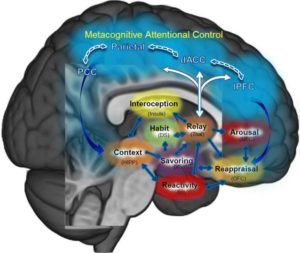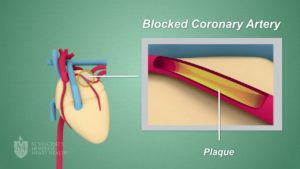Improve Sleep with Mindfulness
By John M. de Castro, Ph.D.
“When we lose awareness of the present moment, our minds get stuck in maladaptive ways of thinking. For example, you might be trying to go to sleep but your mind gets lost thinking about all the groceries you need to buy. Deep, relaxed breathing is forgotten. And once you realize sleep isn’t happening, your muscles tense and your thought process quickly shifts to “I’m not falling asleep! I have XYZ to do this week and I won’t be able to function tomorrow.” The body seizes up, breathing and heart rate can both quicken, and falling sleep becomes more difficult.” – Shelby Freedman Harris
Modern society has become more around-the-clock and more complex producing considerable pressure and stress on the individual. The advent of the internet and smart phones has exacerbated the problem. The resultant psychological distress can impair sleep. Indeed, it is estimated that over half of Americans sleep too little due to stress. As a result, people today sleep 20% less than they did 100 years ago. Not having a good night’s sleep has adverse effects upon the individual’s health, well-being, and happiness. So, non-drug methods to improve sleep are needed. Contemplative practices have been reported to improve mindfulness and, in turn, improve sleep amount and quality and help with insomnia. But, how mindfulness improves sleep has not been explored.
In today’s Research News article “Potential Mechanisms of Mindfulness in Improving Sleep and Distress.” (See summary below or view the full text of the study at: https://www.ncbi.nlm.nih.gov/pmc/articles/PMC5866834/ ), Lau and colleagues examine possible intermediaries that are effected by mindfulness and which, in turn, influence sleep. They recruited a large sample of meditation naïve, Chinese, adults and measured them over the internet for mindfulness, sleep quality, depression, anxiety, and stress. They then performed regression analysis of the associations among these variables.
Replicating previous findings, they found that the higher the levels mindfulness, especially acceptance (non-react facet of mindfulness), the greater the sleep quality and the lower the levels of anxiety, depression, and stress. They also found that the higher the levels of psychological distress, the higher the levels of anxiety, depression, and stress and the lower the levels of mindfulness and sleep quality. So, mindfulness, especially acceptance, was associated with better psychological health and sleep, while psychological distress acted in the opposite direction.
They then tested models that asserted various pathways whereby mindfulness affected sleep quality. They found that the higher the level of acceptance (non-react facet of mindfulness), the greater the impact of awareness (observe facet of mindfulness) on lower general psychological distress and higher the sleep quality. This suggests that acceptance associations with higher sleep quality may be in part mediated by the association of acceptance with lower levels of psychological distress and in turn improved sleep quality.
These findings begin the unravel the mechanisms by which mindfulness improves sleep. It suggests that acceptance (non-react facet of mindfulness) is a very important component of the associations with better sleep and that it, in part, works through associations with lower levels of psychological distress.
So, improve sleep with mindfulness.
“When I first started using mindfulness to get sleep, I believed I needed to be meditating at bedtime if I wanted to cure my insomnia. I was completely wrong! I learned that my worries about sleep were happening all day long. I started using mindfulness during the day to notice those worries and learn to accept that I may not get as much sleep as I hope for each night. . . . worrying about sleep works against the process of falling asleep. All of those concerns about your insomnia just might be making it harder to let go at the end of the day, to relax and let your body rest.” – Mary Sauer
CMCS – Center for Mindfulness and Contemplative Studies
This and other Contemplative Studies posts are also available on Google+ https://plus.google.com/106784388191201299496/posts and on Twitter @MindfulResearch
Study Summary
Lau, W. K. W., Leung, M.-K., Wing, Y.-K., & Lee, T. M. C. (2018). Potential Mechanisms of Mindfulness in Improving Sleep and Distress. Mindfulness, 9(2), 547–555. http://doi.org/10.1007/s12671-017-0796-9
Abstract
The mechanisms of mindfulness-improved sleep quality are not extensively studied. Recently, attention monitoring/awareness and acceptance in mindfulness have been proposed to be the underlying mechanisms that tackle distress and related disorders. The current study tested if acceptance moderated the relationship of awareness with psychological distress and sleep quality, and verified that psychological distress mediated the relationship between mindfulness and sleep quality in a group of community-dwelling healthy adults. Three hundred and sixty-four healthy Chinese non-meditators (age 18–65, 59% female) completed a set of online self-reported questionnaires in Chinese via SurveyMonkey. Awareness and acceptance were measured by Observe and Nonreact facets in the Five Facet Mindfulness Questionnaire (FFMQ), respectively. General psychological distress levels and sleep quality were reflected in the global score of the Depression Anxiety and Stress Scales (DASS) and the Pittsburgh Sleep Quality Index (PSQI), respectively. Model 1 and model 8 in the PROCESS macro for SPSS were used to assess the moderation and moderated mediation effects. Increased level of acceptance (Nonreact) weakened the positive relationship between awareness (Observe) and poor sleep quality (β = −0.0154, p = 0.0123), which was partially mediated through perceived psychological distress (β = −0.0065, 95% bias-corrected bootstrap CI = −0.0128, −0.0004) in a group of community-dwelling healthy adults. Our findings suggested that awareness and acceptance could be the mechanisms of mindfulness interventions in improving sleep quality, partly via reducing psychological stress.
https://www.ncbi.nlm.nih.gov/pmc/articles/PMC5866834/









